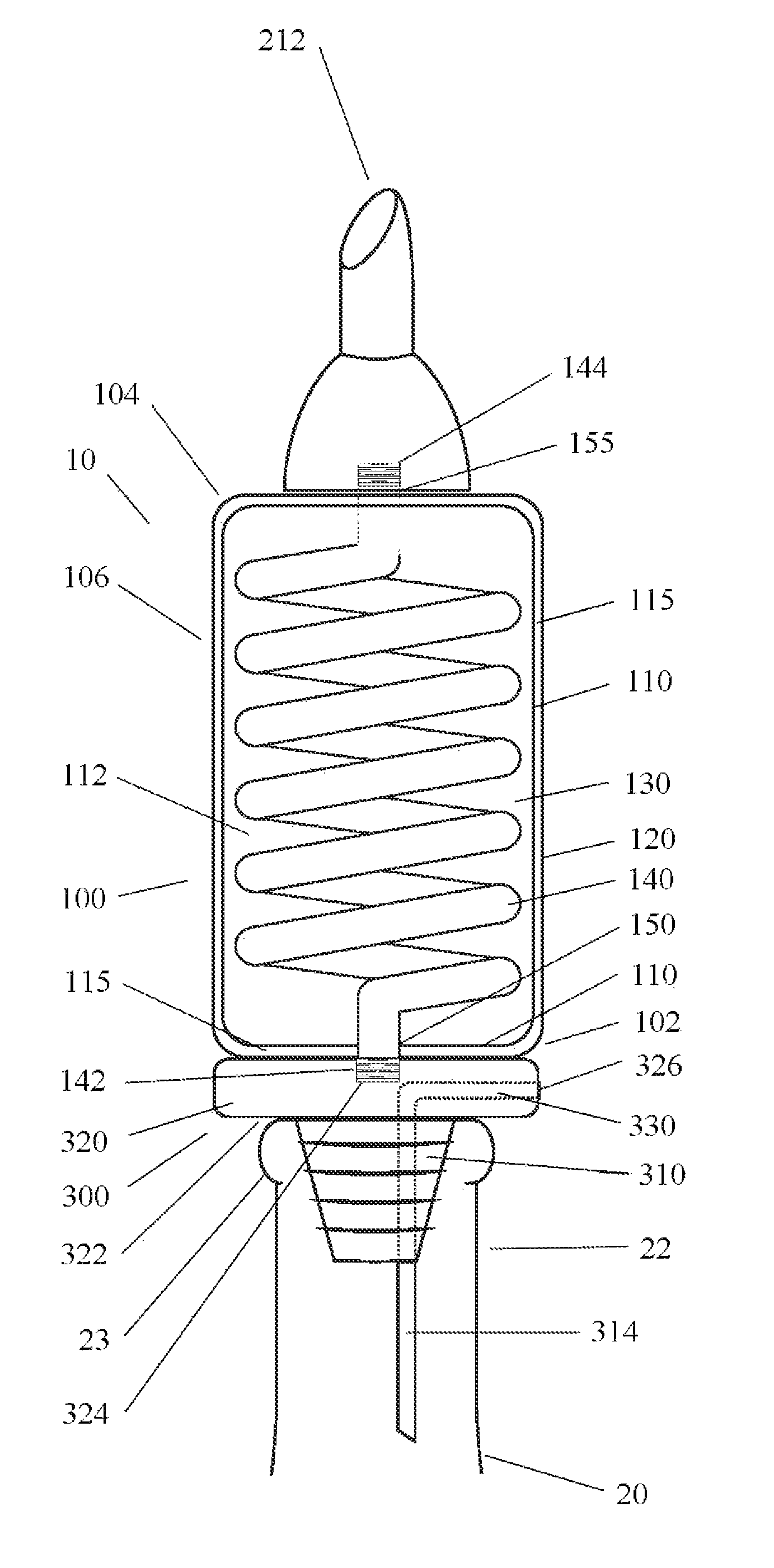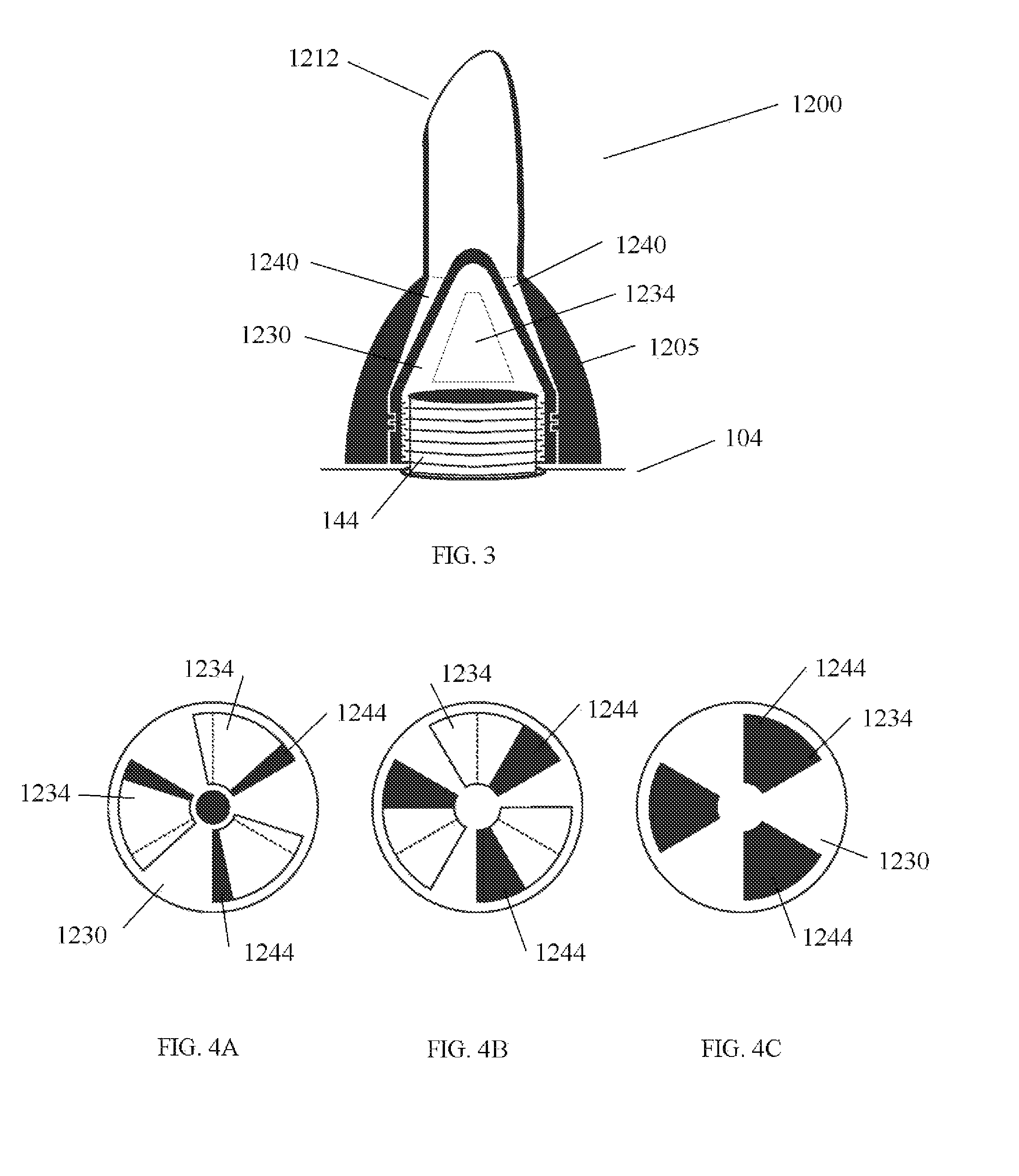Liquid cooling and dispensing device
a liquid cooling and dispensing device technology, applied in the direction of liquid transferring devices, domestic cooling devices, lighting and heating devices, etc., can solve the problems of no means to control the final temperature of wine, system is however bulky, loss of taste and enjoyment, etc., to increase the retention time, increase the cooling of liquid, and stable flow of liquid
- Summary
- Abstract
- Description
- Claims
- Application Information
AI Technical Summary
Benefits of technology
Problems solved by technology
Method used
Image
Examples
first embodiment
[0038]Referring first to FIG. 1, we can see the liquid cooling and dispensing device 10 of the present invention. As described above, the device 10 is generally used to cool a liquid contained in a bottle 20 as the liquid is poured therefrom. As per the invention, the device 10 is preferably designed to be directly mounted to the neck 22 of a bottle 20 (partially shown in FIG. 1).
[0039]In the first embodiment, the device 10 generally comprises three main components, an enclosure 100 to which are mounted a spout 200 and a base 300. The spout 200 and the base 300 are preferably removable in order to ease the cleaning of the device 10.
[0040]The enclosure 100 of the device 10 generally comprises an inner wall 110 and an outer wall 120 which define a space 115 therebetween. The inner wall 110 defines an inner chamber 112 which is filled with cooling material 130. For the purpose of the invention, any cooling material having a freezing point preferably lower than 0 degree Celsius can be u...
second embodiment
[0065]Referring now to FIGS. 5 to 12, the liquid cooling device of the present is disclosed.
[0066]Referring first to FIGS. 5 and 6, the second embodiment 510 of the liquid cooling device generally comprises an enclosure 600 and a base or bottleneck adapter 800 mounted to the bottom portion 602 thereof.
[0067]Referring now more particularly to FIG. 7, the enclosure 600 of the second embodiment 510 generally comprises an outer wall 620 and an inner wall 610 which define a space 615 therebetween. The inner wall 610 further defines an inner chamber 612 inside of which extends a preferably metallic tubular coil 640 through which will flow the liquid to be cooled. Understandably, there could be more than one coils 640 and / or the coil 640 could be made of other heat conductive material, the present invention is not so limited.
[0068]According to the present invention, in order to cool the liquid as it flows through the coil 640, the inner chamber 612 is further filled with low freezing mater...
PUM
 Login to View More
Login to View More Abstract
Description
Claims
Application Information
 Login to View More
Login to View More - R&D
- Intellectual Property
- Life Sciences
- Materials
- Tech Scout
- Unparalleled Data Quality
- Higher Quality Content
- 60% Fewer Hallucinations
Browse by: Latest US Patents, China's latest patents, Technical Efficacy Thesaurus, Application Domain, Technology Topic, Popular Technical Reports.
© 2025 PatSnap. All rights reserved.Legal|Privacy policy|Modern Slavery Act Transparency Statement|Sitemap|About US| Contact US: help@patsnap.com



